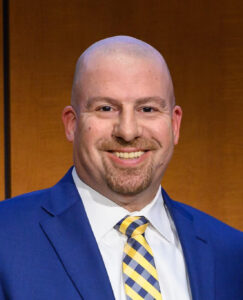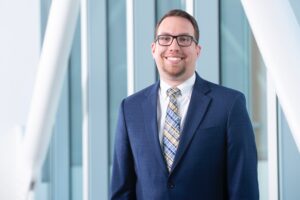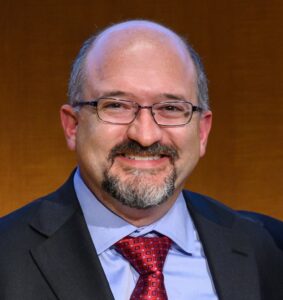2023 HCD Conference Preview: Future-proofing Emergency Departments
The 2023 Healthcare Design Conference + Expo will be held Nov. 4-7, at the Ernest N. Morial Convention Center in New Orleans, La. The annual event will offer a variety of keynote and breakout sessions on a range of topics.
Healthcare Design is previewing some of the upcoming educational sessions in a series of Q+As with speakers, sharing what they plan to discuss and key takeaways they plan to offer attendees.
Session: Future-Proofing Emergency Departments – Adaptable Environments for Supporting Community Crises
Speakers: Dr. Ben Bassin, vice president at Blue Cottage of CannonDesign, and co-founder of Emerging Healthcare Design Consulting; Brian Silva, associate vice president at Cannon Design; Cemal Sozener, co-founder of Emerging Healthcare Design Consulting; and Steven Petrovic, executive director, Emergency Medicine & Orthopaedic Surgery at University of Cincinnati Health.
Flexible and resilient ED design strategies
Healthcare Design: Why is it important for healthcare organizations to rethink their emergency departments to be more flexible and resilient?

Dr. Ben Bassin (Photo credit: CannonDesign)
Dr. Ben Bassin: The way we deliver emergency care today already looks very different than it did when I came out of emergency medicine residency 15 years ago. The pressures on the emergency care system will continue to evolve and change and emergency departments (EDs) will need to look very different than they do today.
Most current EDs were not designed to deal with the scale of crises that face us now, including worldwide infectious disease pandemics, mass shootings, climate change driving massive increases in natural disasters, mental health, and escalating violence against healthcare workers.
All of these factors have completely changed the way our EDs need to function on any given day, month, or year. The built environment cannot be a static monument that can’t evolve or change with healthcare needs.
The environment needs to be dynamic, flexible, moldable, and resilient. Now, more than ever before in our history, we need to pay attention and think creatively about how our buildings can enable and not hinder the future of care delivery.
What types of adjacent or flexible spaces should be considered?

Steven Petrovic (Photo credit: UC Health)
Steven Petrovic: If the pandemic has taught us anything, it’s that our ability to be adaptable to all situations is paramount. For that reason, not only do we need to rapidly surge and deploy personnel, equipment, and operational readiness plans, but we need the physical environment to surge and adapt as well.
We have seen this flexible care model married to flexible space work in physician triage models, vertical treatment zones, and ED intensive care units (ICUs). Now we are proposing this new model to have a similar flexible/surge space for mass casualty incidents, pandemic surges, disasters, and other just-in-time needs.
Can you give an example that you’ll share and briefly explain what it helped address?

Cemal Sozener
Cemal Sozener: One example we’ll share is a novel, large flexible community space we are designing for a leading Level 1 trauma academic ED adjacent to their waiting area.
The intended use for this space most of the time is as an adjunct waiting room and café. It’s designed, however, to rapidly transform into an open treatment area complete with embedded medical fixtures that can be utilized for a variety of emergency and mass casualty scenarios.
As the recent pandemic and growing mass casualty incidents in our communities have taught us, maximizing innovation and flexibility in our built environment is the key to providing the necessary facilities for clinical staff to best handle the next unknown emergency situation. This type of future-state thinking and innovative design is paramount when building clinical space that will need to flex to the unknown emergent clinical demands of the future.
What’s a takeaway you hope attendees learn from your session?
Petrovic: The ever-growing need for preparedness is real and our current environments are usually not adequate for the large range of needs in response to either a pandemic or natural or human-made disaster.
By partnering with local, state, and federal elected officials, Level one trauma centers have an opportunity to develop novel concepts that elevate readiness and preparedness for these events with more manageable costs for the health system.
For more on the HCD Conference schedule and registration, visit hcdexpo.com.


